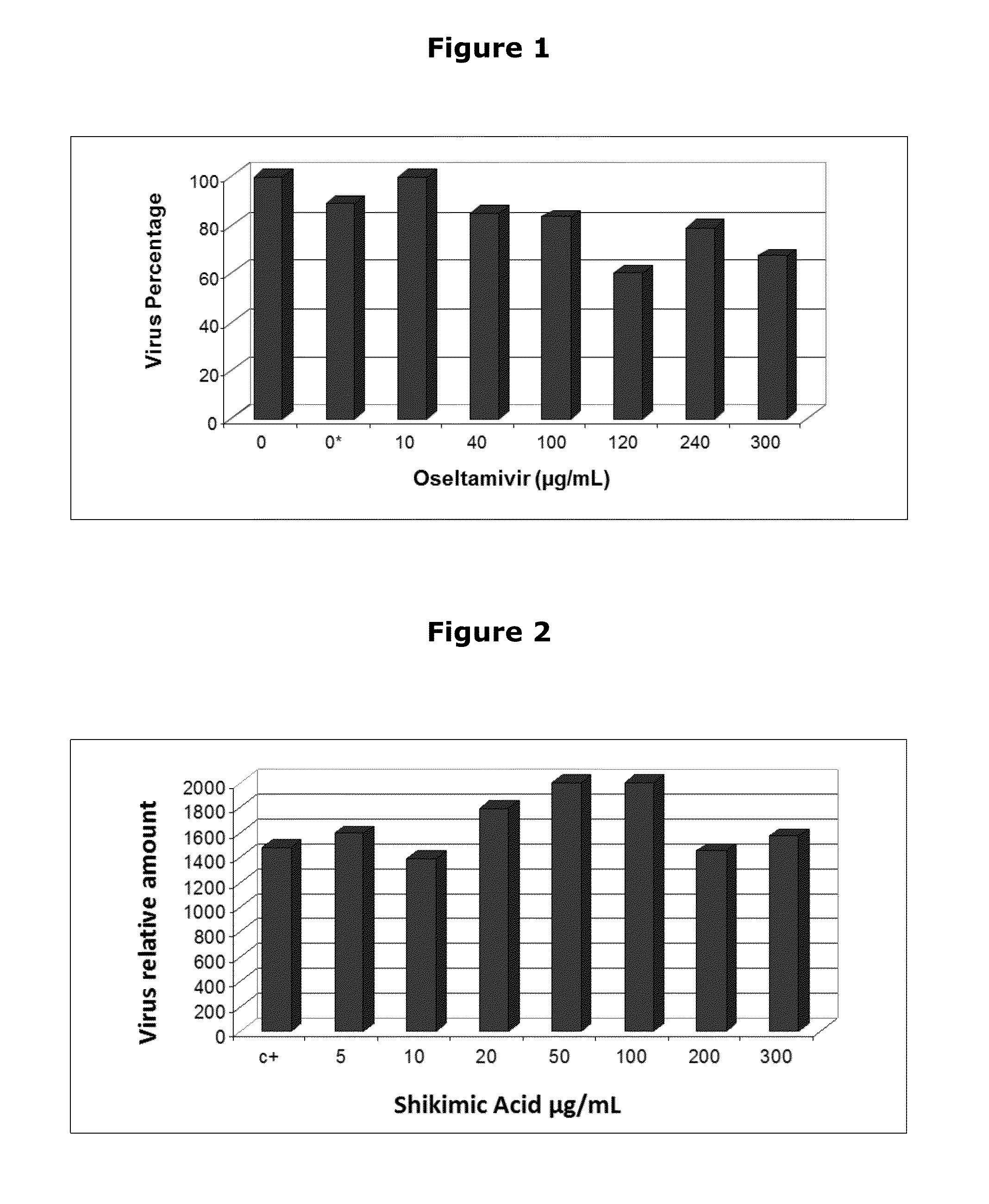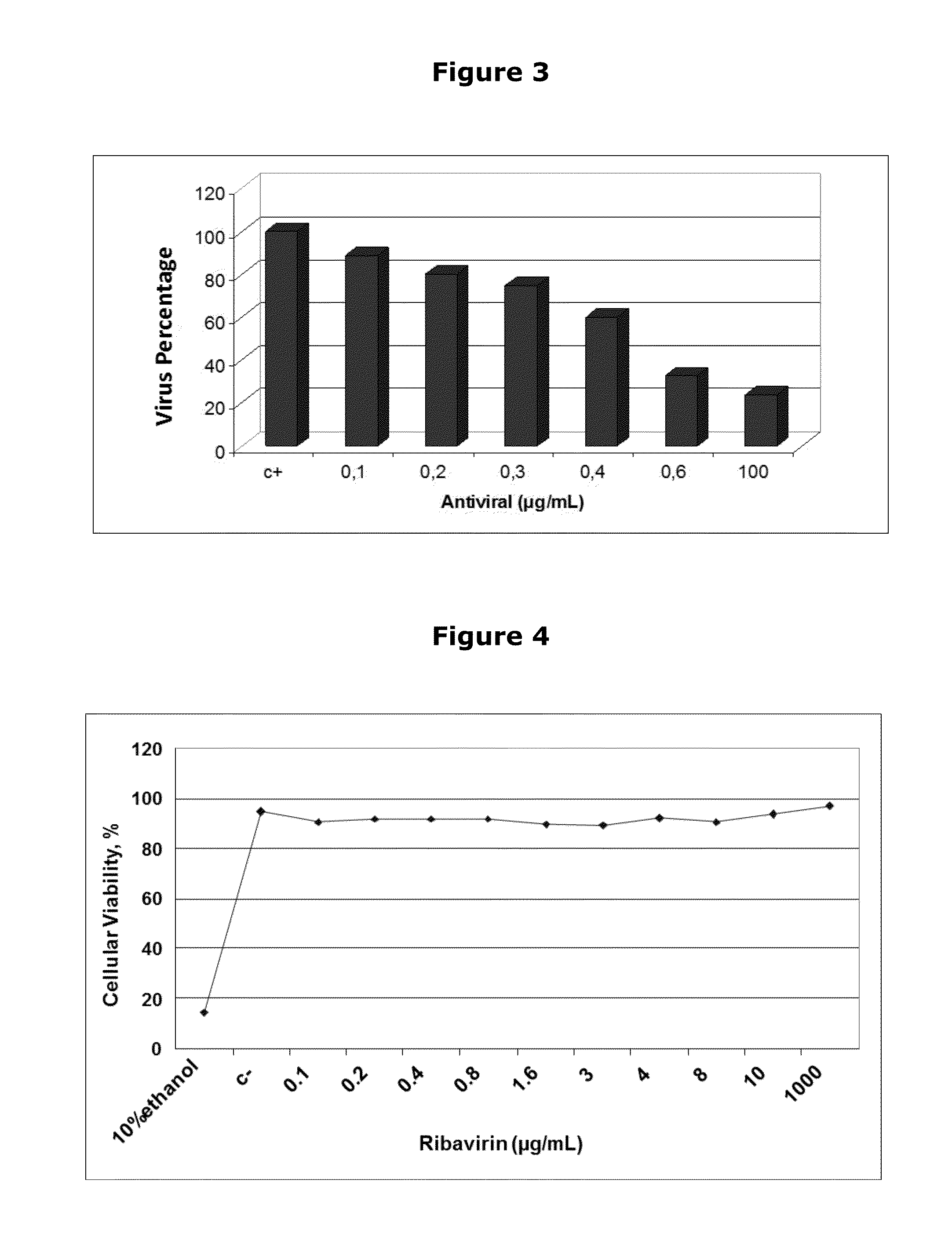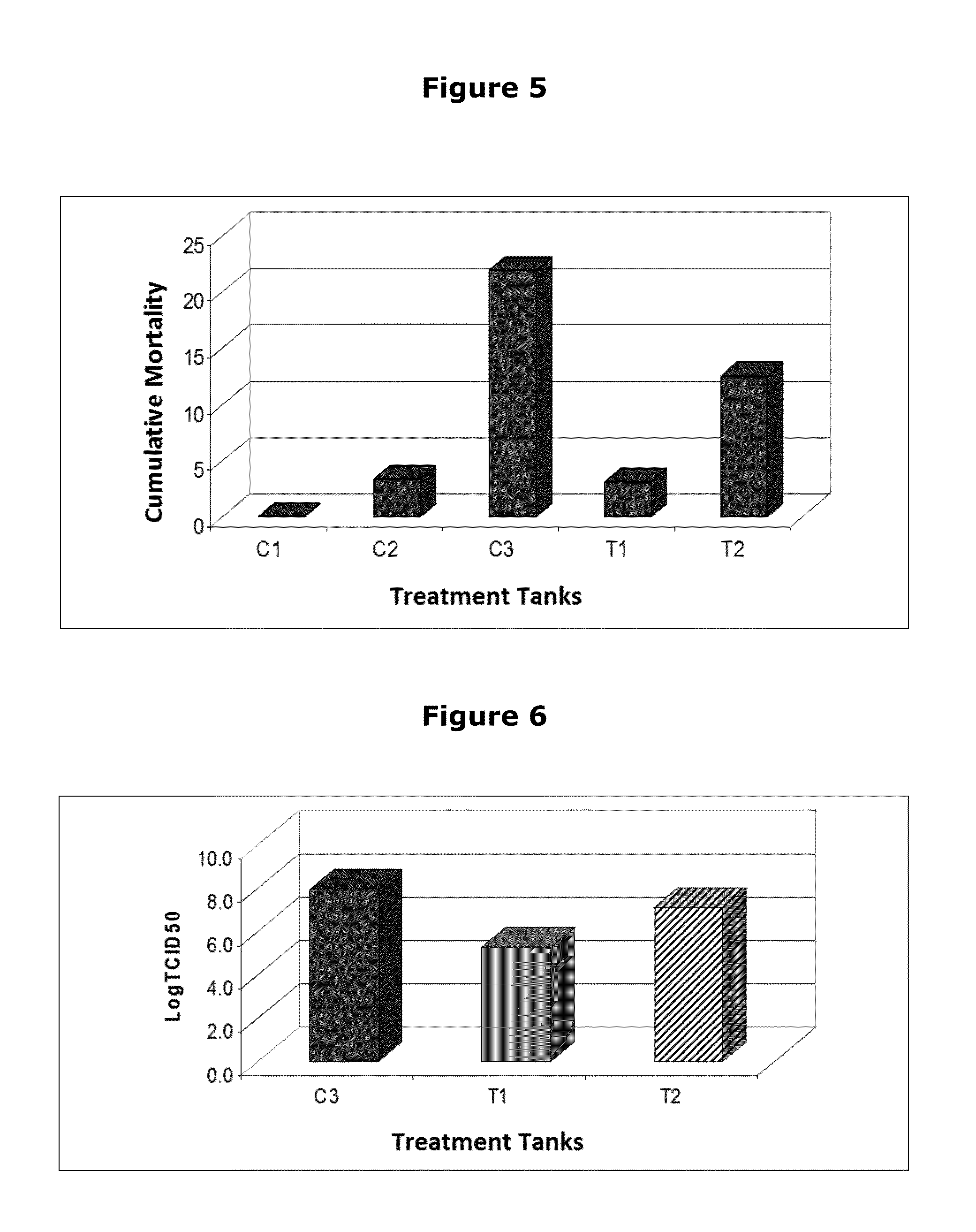Use of 1-beta-D-ribofuranosyl-1H-1,2,4-triazole-3-carboxamide for the treatment of infectious salmon anemia
a technology of ribofuranosyl and ribofuranosyl, which is applied in the direction of biocide, plant growth regulator, sugar derivative, etc., can solve the problems of reducing the number of approved antiviral compounds that can be used for the treatment of infections caused by rna, reporting up to 80% of the total production, and difficult control
- Summary
- Abstract
- Description
- Claims
- Application Information
AI Technical Summary
Benefits of technology
Problems solved by technology
Method used
Image
Examples
Embodiment Construction
[0002]The present invention relates to the novel use of ribavirin for the treatment of infectious salmon anemia caused by the infectious salmon anemia or ISA virus in salmonids.
BACKGROUND OF THE INVENTION
[0003]Infectious Salmon Anemia (ISA) is a viral exclusive in culture disease of the Atlantic salmon (Salmo salar L.), discovered in 1984 in Norway (Thorud and Djupvik, Infectious anemia in Atlantic salmon (Salmo salar L.), Bull. Eur. Assoc. Fish Pathol. 8: 109-111, 1988) and it is characterized by provoking high mortality in fish. The most common signs are severe anemia; exophthalmos; ascites; petechial hemorrhage in viscera, adipose tissue and skin; and hemorrhagic necrosis in the liver of infected fish (Falk and Dannevig, infectious salmon anemia Demonstration of (ISA) viral antigens in cell cultures and tissue sections. Vet. Res 26: 499-504, 1995; Falk et al, Characterization of infectious salmon anemia virus, an orthomyxo-like virus isolated from Atlantic salmon (Salmo salar L.)...
PUM
| Property | Measurement | Unit |
|---|---|---|
| concentrations | aaaaa | aaaaa |
| concentrations | aaaaa | aaaaa |
| concentrations | aaaaa | aaaaa |
Abstract
Description
Claims
Application Information
 Login to View More
Login to View More - R&D Engineer
- R&D Manager
- IP Professional
- Industry Leading Data Capabilities
- Powerful AI technology
- Patent DNA Extraction
Browse by: Latest US Patents, China's latest patents, Technical Efficacy Thesaurus, Application Domain, Technology Topic, Popular Technical Reports.
© 2024 PatSnap. All rights reserved.Legal|Privacy policy|Modern Slavery Act Transparency Statement|Sitemap|About US| Contact US: help@patsnap.com










